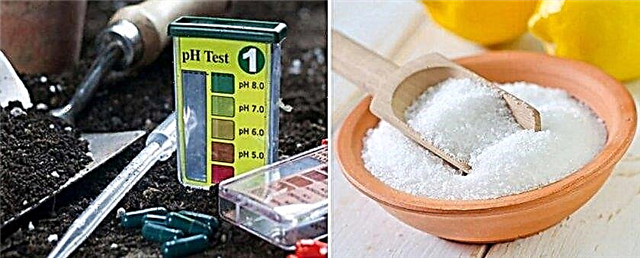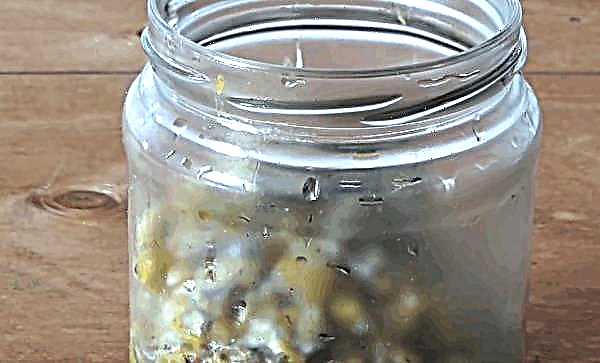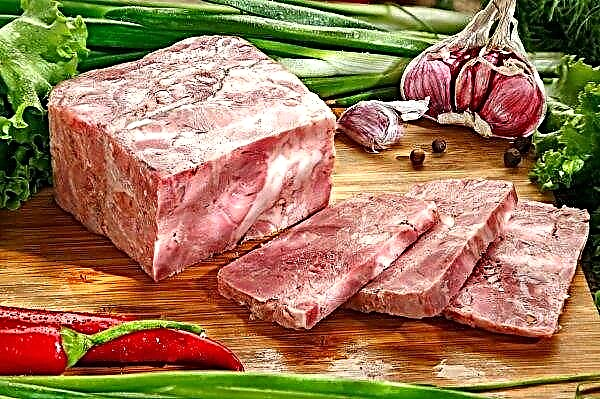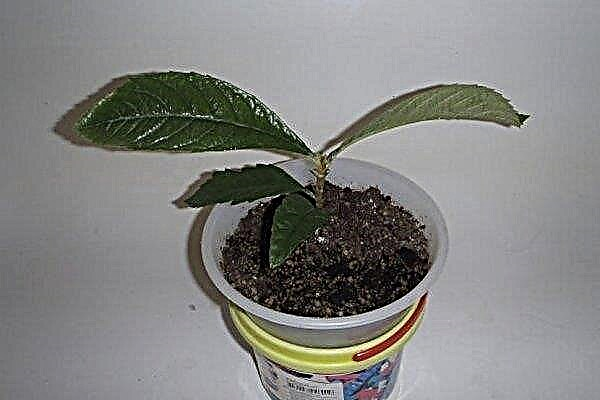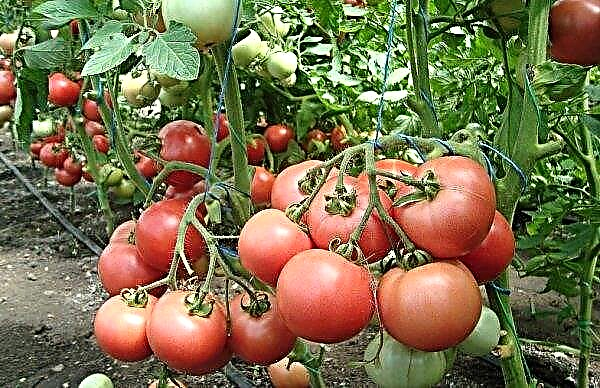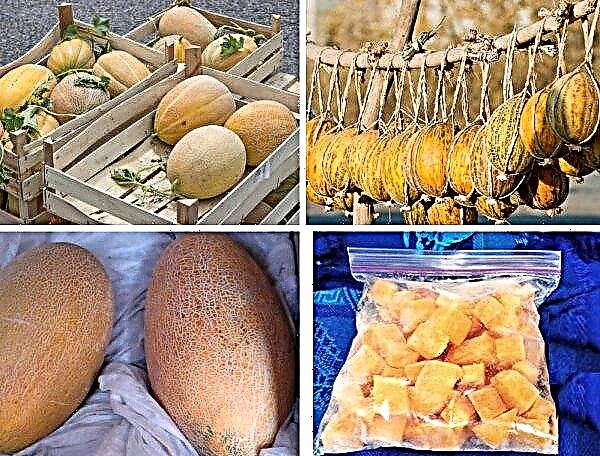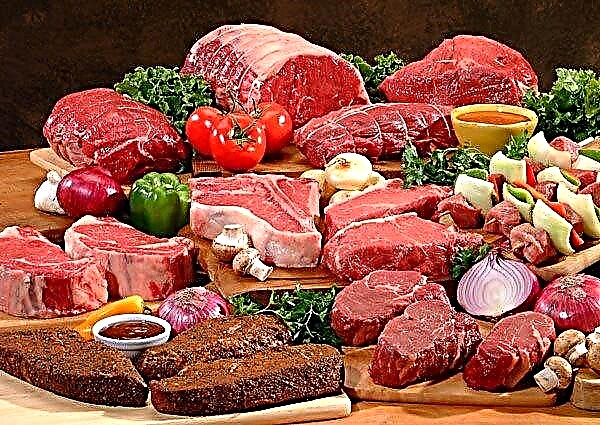Lentils is one of the most ancient crops grown by man. In our country, it is not as widespread as in the East, in the USA or Canada. Some people are afraid to eat this plant, because they believe that they will have a swollen stomach, as well as from all legumes.
Lentil Botanical Description
Food lentils (cultivated or ordinary) refers to the genus of lentils. This bean plant is widely cultivated for the food industry and for animal feed. It can grow like a weed.
Did you know? With the same name, common lentils, there is a bird the size of a sparrow from the finch family. It is easy to identify her male by the bright red color of her head and chest.
Lentil ordinary grows in height from 15 to 75 cm, has pubescence on the stem and is highly branched. Leaves are arranged alternately and fastened with short petioles. They are paranoid, consisting of 3-4 pairs of narrow oval leaflets with pointed ends 10–20 mm long and 3–8 mm wide.

The plant blooms in June - July with small flowers 5-7 mm in size, collected in inflorescences of 1-4 pieces. They have a short bell-shaped cup. The flowers go down and can be white, pink or purple. The ovary is obtained with 1-2 ovules.
Beans with 1-3 flattened seeds are diamond-shaped 10 mm long and 8 mm thick. The color of the seed depends on varietal characteristics.
Calorie content, chemical and vitamin composition
The nutritional value and composition of different varieties of lentils as a whole is not very different. In 100 g of whole dry grains of green or brown varieties there are 297 kcal, and in red - 318 kcal.
The nutritional value of 100 g of the edible portion of lentils is as follows:
- proteins - 24.6 g;
- fats - 1.06 g;
- carbohydrates - 52.7 g;
- dietary fiber - 10.7 g;
- water - 8.3 g;
- ash - 2.7 g.

Lentils have a high content of B vitamins (B1, B2, B4, B5, B6, B9), there are vitamins C, E, PP, K, niacin. There are a lot of beta-carotene in red lentils. The highest levels of vitamin B9, better known as folic acid, are 479 mcg (119% of the daily intake), vitamin B1 (58.2%) and vitamin B5 (42.8%).
The mineral composition is represented by potassium (677 mg), phosphorus (281 mg), magnesium (47 mg), calcium (35 mg), sodium (6 mg). Among the trace elements there is iron, zinc, manganese, copper, selenium.
Almost a third of the calories in the product are easily digestible proteins, but they have an incomplete amino acid composition. Among sugars there are oligosaccharides, which are a source of gas formation.
Important! There are nutritional supplements that contain a special enzyme called alpha galactosidase, which helps get rid of the problem of excessive gas formation. In addition, the stomach can hurt not only because of the accumulation of gases.
Useful and harmful properties for the body
- Lentils have the following beneficial effects on the human body:
- The high content of soluble fibers helps to reduce harmful cholesterol in the blood, which, in turn, has a positive effect on the functioning of the cardiovascular system as a whole.
- Soluble fiber also helps the carbohydrate digestibility process, reducing the risk of diabetes.
- The presence of magnesium improves blood circulation, helps with problems with cardiac activity.
- The content of insoluble fiber has a beneficial effect on the function of the digestive tract.
- This product is rich in protein of plant origin, therefore it is very popular among lovers of vegetarian dishes. The protein contains beneficial amino acids (isoleucine and lysine). Cut lentil grains contain methionine and cysteine, which protect the body from toxins and the negative effects of radiation.
- This product is a source of iron and helps with anemia.
- It contains a small amount of fat and is considered a low-calorie product. Therefore, it is useful to include lentils in the diet menu for weight loss.
- Folic acid (vitamin B9) improves blood composition, strengthens the walls of blood vessels, positively affects the nervous system, accelerates metabolic processes. The need for it is increasing in the diet of pregnant women. With a lack of folic acid, the risk of cancer increases, there are problems with vision, hearing, heart, pathology of fetal development.

- In some cases, eating lentils can be harmful:
- due to the presence of purines, when consumed in large quantities, there are risks of gout;
- long-term consumption of the product can lead to damage to the canals in the kidneys, as well as the appearance of urolithiasis;
- causes gassing in the intestines.
But, it should be noted that consumption to the extent of this product will not harm anyone.
Gas generating product or not
Unfortunately, lentils are heavy enough to be digested and can lead to negative effects such as gas, cramping, and gastrointestinal dysfunction.
 Like all legumes, it contains saponins in its composition, which protect this plant crop from insect pests, and when cooking form soap foam.
Like all legumes, it contains saponins in its composition, which protect this plant crop from insect pests, and when cooking form soap foam.
They do not allow proteins to be easily absorbed, which leads to stagnation of food in the intestine and the formation of gases in it. The product also contains oligosaccharides that promote gas formation. All of these causes can bloat the stomach and cause pain.
Important! If bloating is a constant occurrence and does not depend on nutrition, then you should visit a gastroenterologist, as this may indicate problems with the gastrointestinal tract.
How to cook lentils so that there is no flatulence
Smaller lentils are processed by the gastrointestinal tract better than large grains of beans or peas, but it is still heavy food. Therefore, this gas-forming product should be eaten in small portions and be able to cook properly.
Video: cooking lentils
To prepare lentil kernels so that there is no flatulence, you can use the following recommendations:
- Before cooking, place at least overnight in water. Experts recommend the soaking process to withstand 1-3 days. The longer this procedure takes, the easier it will be to absorb this heavy product. It should be noted that lentils can be cooked without soaking. If there are problems with the formation of gases, the soaking process will not hurt to reduce the level of inhibitors in legumes, which contribute to the formation of gases due to inhibition of fermentation processes.
- To conduct the process, water should be taken soft in composition. If it is hard, you can soften it by adding a little lemon juice or apple cider vinegar.
- Soaking fluid should be replaced more than once. In this case, lentil grains are washed each time.
- When boiling water when boiling the product, you must regularly remove the foam.
- It is recommended first to boil the lentil seeds for several minutes, and then completely drain the water and rinse the grains. Then pour boiling water and cook further until fully cooked.
- It is good to add fermented foods to lentil dishes, toss fresh dill, fennel. It’s good to use coriander, ginger, caraway seeds and turmeric as seasoning.
- From lentils you need to prepare light dishes and not combine them with dairy products, meat, fish and fruits. This bean product harmonizes well with vegetables (tomatoes, cabbage, zucchini, cereals).
- After taking the product, it is recommended that you do not drink cool drinks for 30–40 minutes and generally eliminate heavy drinking. This can increase flatulence. To avoid it, it is better to use teas with the addition of fennel seeds, anise, dill, mint and coriander as a drink.
- When soaking and cooking, you can add Comb. This will increase the nutritional value and digestibility of the dish.
 Kombu are seaweeds that will improve fermentation processes. They are very popular in Japanese and Korean cuisine.
Kombu are seaweeds that will improve fermentation processes. They are very popular in Japanese and Korean cuisine.
Lentils are a source of many trace elements necessary for humans, but can cause flatulence, although not as much as many other legumes, and have other contraindications. This product can be prepared so as to minimize the appearance of gases and absorb the maximum amount of nutrients.

